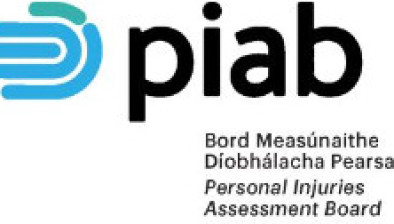Louise Smith: Defendants bank on new legislation to reduce plaintiff costs in personal injury actions

Louise Smith
Ronan Daly Jermyn partner Louise Smith and trainee Aisling Breen explore proposals to reduce plaintiff costs in personal injury litigation.
The personal injuries realm has often been known to be “pro-plaintiff” with little risk involved in bringing a claim and no real incentive to settle a claim before the “court steps” when all legal costs have been incurred.
From a defence perspective, the early resolution of a matter has been at the plaintiff’s choice, with often a requirement of the payment to the plaintiff of a “top up” in order to settle a claim, the balance of power therefore largely resting on the plaintiff’s side.
A recent tool was added to the defendant’s armoury by the enactment in October 2019 of the Legal Services Regulation Act 2015 and section 169(1)(f) has now enabled the use of a ‘letter of offer’ in civil proceedings.
Prior to the introduction of this legislation, these letters of offer (commonly referred to as Calderbank letters) were essentially excluded from use in personal injury claims. S.I. No. 12/2008, section 1A provided that the court can have regard to the terms of any offer in writing, other than a personal injury action where a lodgment or tender offer may be made.
The LSRA 2015 suggests that letters of offer can now be used in personal injury cases.
Section 169 (1) states that “a party who is entirely successful in civil proceedings is entitled to an award of costs against a party who is not successful in those proceedings, unless the court orders otherwise, having regard to the particular nature and circumstances of the case, and the conduct of the proceedings by the parties, including:
- conduct before and during the proceedings;
- whether it was reasonable for a party to raise, pursue or contest one or more issues in the proceedings;
- the manner in which the parties conducted all or any part of their cases;
- whether a successful party exaggerated his or her claim;
- whether a party made a payment into court and the date of that payment;
- whether a party made an offer to settle the matter the subject of the proceedings, and if so, the date, terms and circumstances of that offer; and
- where the parties were invited by the court to settle the claim (whether by mediation or otherwise) and the court considers that one or more than one of the parties was or were unreasonable in refusing to engage in the settlement discussions or in mediation”.
The offer letter remains “without prejudice” until after the court has ruled on the case. If the offer is not exceeded, the judge is then informed about the offer when deciding on costs. Section 169(1)(f) clearly sets out that the court must take the offer into account when deciding on the costs.
Whereas a tender is a figure to be beaten at trial date, I would suggest that with a Calderbank offer if the offer is beaten, but only marginally so, then there is still a strong argument that the plaintiff should be penalised if the offer made was reasonable at the time it was made, and taking account of increasing special damages, the additional costs of the matter going to trial, etc. Arguments also could be made in relation to late delivery of additional particulars of special damage.
It is essential that the letter is detailed and clearly sets out the offer itself with particular attention to the issue of costs along with the date of expiry of the offer together with the consequences of rejecting the offer.
The court will look to the conduct of the parties when deciding if the plaintiff’s rejection of the offer was reasonable. If a court finds that the plaintiff’s rejection of an offer was unreasonable, there is a possibility that the plaintiff will be held liable for their own costs and for the defendant’s costs from the date of the letter.
The Calderbank letter can be issued at any point during the proceedings however, it should of course be served as early as possible in the litigation process in order to minimise costs and increase the potential costs burden on a plaintiff should he not beat the offer.
This provision is in addition to a lodgment/tender, serving a section 17 notice or applying for a cost differential order. Due to the strict time frames specified for these other provisions they are often not a very effective option, as the information required in order to accurately assess the value of a claim will, in most cases, not have been provided to the defendant within the specified time frame.
Offer letters pursuant to s.169 may be an effective tool for defendants and are certainly something which should focus the mind of plaintiffs and their advisors when presented with a reasonable offer of settlement in a personal injury claim.

- Louise Smith is a partner and Aisling Breen is a trainee at Ronan Daly Jermyn.








